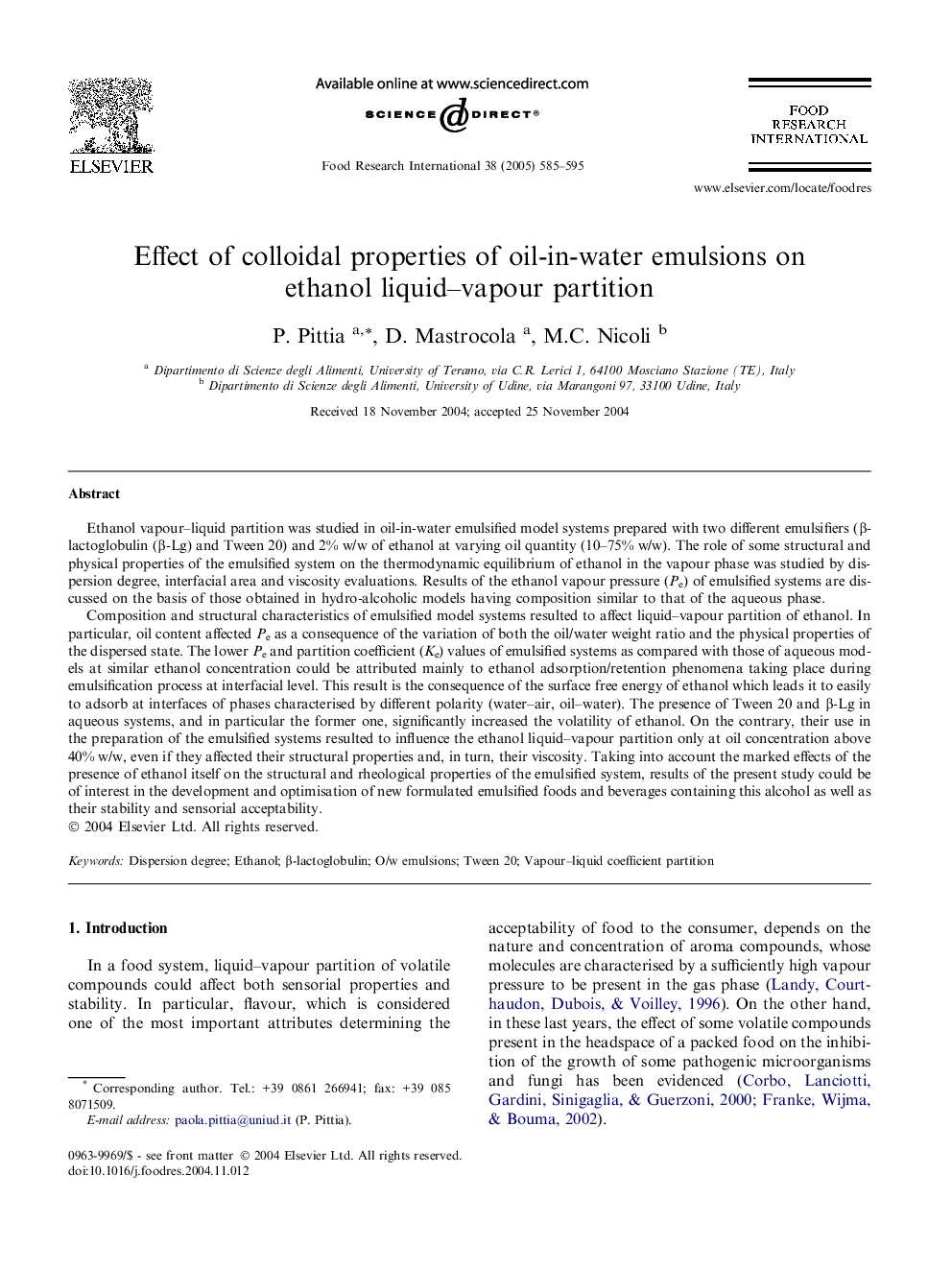| Article ID | Journal | Published Year | Pages | File Type |
|---|---|---|---|---|
| 9487580 | Food Research International | 2005 | 11 Pages |
Abstract
Composition and structural characteristics of emulsified model systems resulted to affect liquid-vapour partition of ethanol. In particular, oil content affected Pe as a consequence of the variation of both the oil/water weight ratio and the physical properties of the dispersed state. The lower Pe and partition coefficient (Ke) values of emulsified systems as compared with those of aqueous models at similar ethanol concentration could be attributed mainly to ethanol adsorption/retention phenomena taking place during emulsification process at interfacial level. This result is the consequence of the surface free energy of ethanol which leads it to easily to adsorb at interfaces of phases characterised by different polarity (water-air, oil-water). The presence of Tween 20 and β-Lg in aqueous systems, and in particular the former one, significantly increased the volatility of ethanol. On the contrary, their use in the preparation of the emulsified systems resulted to influence the ethanol liquid-vapour partition only at oil concentration above 40% w/w, even if they affected their structural properties and, in turn, their viscosity. Taking into account the marked effects of the presence of ethanol itself on the structural and rheological properties of the emulsified system, results of the present study could be of interest in the development and optimisation of new formulated emulsified foods and beverages containing this alcohol as well as their stability and sensorial acceptability.
Related Topics
Life Sciences
Agricultural and Biological Sciences
Food Science
Authors
P. Pittia, D. Mastrocola, M.C. Nicoli,
